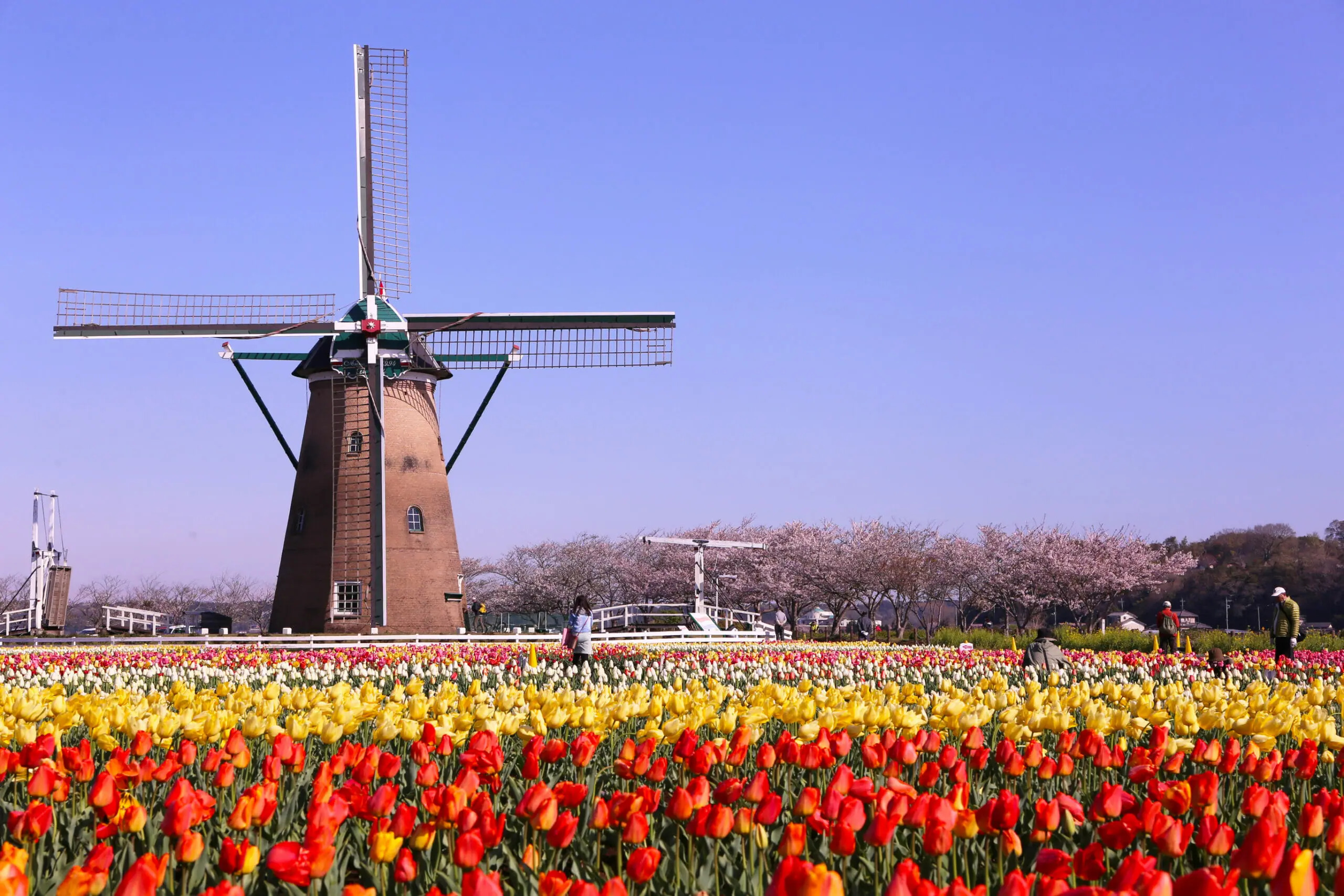
Sakura, also known as cherry blossoms, hold a special place in Japanese culture and have captivated people around the world with their delicate beauty and ephemeral nature. These transient flowers bloom for a short period of time, typically in the spring, painting the landscape in stunning shades of pink and white. The celebration of cherry blossoms, known as Sakura Matsuri, is a cherished tradition in Japan and draws millions of visitors from all corners of the globe.
In this article, we will delve into the fascinating world of Sakura and uncover 38 intriguing facts about these enchanting flowers. From their significance in Japanese history and society to the scientific aspects of their blooming process, you will discover a wealth of interesting information that will deepen your appreciation for Sakura.
Key Takeaways:
- Cherry blossoms, known as “sakura” in Japanese, are a beautiful symbol of renewal and hope. They bloom for a short time, inspiring art, festivals, and joy around the world.
- The sakura season marks the arrival of spring and brings people together to celebrate the fleeting beauty of cherry blossoms. Their delicate nature reminds us to cherish every moment.
Sakura is the Japanese word for cherry blossom.
Sakura represents a significant symbol in Japanese culture, representing the beauty and transient nature of life.
Cherry blossoms are the national flower of Japan.
They hold a special place in Japanese culture and are celebrated during the annual cherry blossom festival known as Hanami.
There are over 600 varieties of sakura in Japan.
Each variety differs in color, shape, and blooming time, offering a stunning visual display across the country.
The blooming season for cherry blossoms is short-lived.
Typically, cherry blossoms bloom for only one to two weeks, making their beauty all the more precious and ephemeral.
The blooming time of cherry blossoms varies depending on the region and weather conditions.
In colder regions, such as Hokkaido, cherry blossoms bloom later, while in warmer areas like Okinawa, they bloom earlier.
Cherry blossoms bloom in a progression known as the sakura zensen.
The sakura zensen is a wave-like phenomenon where cherry blossoms bloom from south to north across Japan.
Cherry blossom viewing parties are a popular tradition in Japan.
During Hanami, people gather under blooming cherry trees to have picnics, socialize, and enjoy the beauty of the blossoms.
Cherry blossom forecasts are issued every year in Japan.
These forecasts help people plan their Hanami celebrations and anticipate the peak blooming time in each region.
Kyoto is famous for its cherry blossoms.
The historic city is known for its stunning cherry blossom spots, including the scenic Philosopher’s Path and Maruyama Park.
The cherry blossom is a symbol of renewal and hope.
Its fleeting beauty reminds us to cherish every moment and embrace the transient nature of life.
Cherry blossoms have inspired various art forms in Japan.
From traditional paintings and poetry to contemporary works, cherry blossoms have been a muse for many artists throughout history.
The sakura season attracts tourists from all around the world.
Many travelers visit Japan during cherry blossom season to witness the breathtaking beauty of the blossoms.
Sakura trees can be found in other countries as well.
Cherry blossoms can be admired in countries like the United States, Canada, South Korea, and the United Kingdom.
Cherry blossom festivals are celebrated worldwide.
Several countries host their own cherry blossom festivals, showcasing the beauty of these delicate flowers.
Cherry blossoms come in various colors, including pink, white, and even yellow.
While pink cherry blossoms are the most commonly seen, other hues add diversity and visual interest to cherry blossom displays.
Japan has designated several official “Top 100 Cherry Blossom Spots.”
These designated spots offer some of the most picturesque views and are highly sought after during cherry blossom season.
Some cherry trees are several hundred years old.
These ancient trees have witnessed countless cherry blossom seasons and are cherished for their historical significance.
Cherry blossoms have cultural significance beyond Japan.
They are often used in art, literature, and various cultural events around the world as a symbol of beauty and transient nature.
Sakura-themed merchandise is popular during cherry blossom season.
From souvenirs and clothing to food and beverages, businesses capitalize on the sakura craze during this time of year.
The first cherry blossoms of the year are closely monitored and reported in Japan.
Media outlets often report on the blooming of the first cherry blossoms, symbolizing the arrival of spring.
Cherry blossoms have a delicate and fragrant scent.
Walking among blooming cherry trees offers not only a visual treat but also a sensory experience with their captivating aroma.
Cherry blossoms hold spiritual significance in Japanese Buddhism.
They represent the transient nature of life and are often associated with Buddhist concepts of impermanence and mindfulness.
Cherry blossoms have inspired fashion trends.
Designers incorporate the beauty of cherry blossoms into clothing, accessories, and even makeup during the spring season.
Cherry blossom-themed celebrations continue into the night.
Many cherry blossom spots are illuminated at night, creating a magical and enchanting atmosphere.
The practice of Hanami dates back centuries.
Japanese nobles enjoyed viewing cherry blossoms and composing poetry as early as the 8th century.
Sakura trees are often planted as a symbol of friendship.
As a gesture of goodwill, Japan has gifted cherry blossom trees to other countries as a symbol of friendship and cultural exchange.
The blooming of cherry blossoms is weather-dependent.
Frost or rain can damage the delicate blossoms, causing a shorter blooming period or preventing full bloom altogether.
Cherry blossoms inspire a sense of awe and wonder in spectators.
The ethereal beauty of these delicate flowers evokes a feeling of serenity and appreciation for the wonders of nature.
Cherry blossoms have been a subject of haiku poetry.
Haiku, a traditional form of Japanese poetry, often captures the essence of cherry blossoms in its subtle and evocative verses.
Sakura motifs can be found in traditional Japanese architecture.
From temples and shrines to tea houses and garden designs, cherry blossoms play a significant role in Japanese architectural aesthetics.
Japan has a Sakura Medal for English-language children’s literature.
The Sakura Medal is an annual award recognizing outstanding English-language books for children and young adults in Japan.
Cherry blossoms have medicinal properties in traditional Chinese medicine.
In traditional Chinese medicine, cherry blossoms are believed to have detoxifying and anti-inflammatory effects.
The cultivation and care of cherry trees require expertise.
Gardening techniques such as pruning and grafting are employed to ensure healthy and beautiful cherry trees.
Sakura-themed food and drinks are popular during cherry blossom season.
From sakura-flavored sweets and beverages to sakura-themed rice cakes, culinary delights abound during this time of year.
Cherry blossoms provide a stunning backdrop for photography.
Both amateur and professional photographers flock to cherry blossom spots to capture the beauty of these flowers in their lenses.
Sakura trees are planted worldwide as a symbol of Japan.
Many countries have embraced the cultural significance of cherry blossoms and planted sakura trees to honor Japan’s traditions.
The sakura season marks the arrival of spring.
Cherry blossoms symbolize new beginnings and the end of winter, bringing joy and hope to people around the world.
Cherry blossoms signify love and beauty in the Language of Flowers.
In the Language of Flowers, cherry blossoms convey sentiments of love, beauty, and the transient nature of existence.
Conclusion
Sakura, also known as cherry blossoms, are not just beautiful flowers but hold deep cultural and symbolic significance in Japan and many other parts of the world. The fleeting bloom of sakura serves as a reminder of the transient and ephemeral nature of life. Sakura festivals attract millions of visitors each year, offering a captivating spectacle of pink and white blooms. These delicate flowers have inspired poets, artists, and designers for centuries, and their charm continues to enthrall people around the globe.Whether you’re planning a trip to Japan during sakura season or simply appreciating the beauty of cherry blossoms in your local park, these 38 facts about sakura provide fascinating insights into their history, symbolism, and cultural significance. From their origins in Japan to their modern-day celebrations, sakura continue to captivate the hearts of people everywhere.
FAQs
1. When do cherry blossoms typically bloom?
Cherry blossoms usually bloom in early spring, between March and April, depending on the climate and location.
2. How long do cherry blossoms last?
The blooming period of cherry blossoms is relatively short, typically lasting for about one to two weeks.
3. Where can I see cherry blossoms besides Japan?
Cherry blossoms can be found in various countries, including the United States, Korea, China, and many European countries.
4. Are cherry blossoms only pink?
While pink is the most common color, cherry blossoms can come in various shades, including white, light pink, and even yellow.
5. Is there a specific meaning behind cherry blossoms?
Cherry blossoms symbolize beauty, purity, and the transient nature of life in Japanese culture.
6. Are there any traditional customs associated with cherry blossoms?
Hanami is a popular tradition in Japan, where people gather under cherry blossoms to enjoy picnics and appreciate their beauty.
7. Can I grow cherry blossoms in my garden?
Cherry blossoms require specific climate conditions and soil types, so it’s best to consult with a horticulturist or expert before planting them.
8. What is the significance of cherry blossoms in art and literature?
Cherry blossoms are often depicted in traditional Japanese art and have been a prominent theme in literature, symbolizing love, beauty, and the transient nature of life.
9. Are there any other flowers similar to cherry blossoms?
Plum blossoms, magnolias, and apple blossoms are often compared to cherry blossoms due to their similar delicate beauty.
10. How can I plan a trip to Japan during cherry blossom season?
It’s advisable to book accommodations and transportation well in advance, as cherry blossom season is a popular time for travel to Japan.
If you're captivated by the allure of sakura, there's even more to explore. Delve into the world of Sakura Haruno, a beloved character from the Naruto universe, and uncover intriguing facts about her life and journey. For those curious about lesser-known destinations, Hiratsuka offers a wealth of fascinating history and cultural gems waiting to be discovered. And if you thought you knew everything about cherry blossoms, think again—prepare to be amazed by a collection of unbelievable facts that will deepen your appreciation for these enchanting flowers. Embark on a journey of discovery and immerse yourself in the captivating world of sakura and beyond.
Was this page helpful?
Our commitment to delivering trustworthy and engaging content is at the heart of what we do. Each fact on our site is contributed by real users like you, bringing a wealth of diverse insights and information. To ensure the highest standards of accuracy and reliability, our dedicated editors meticulously review each submission. This process guarantees that the facts we share are not only fascinating but also credible. Trust in our commitment to quality and authenticity as you explore and learn with us.


